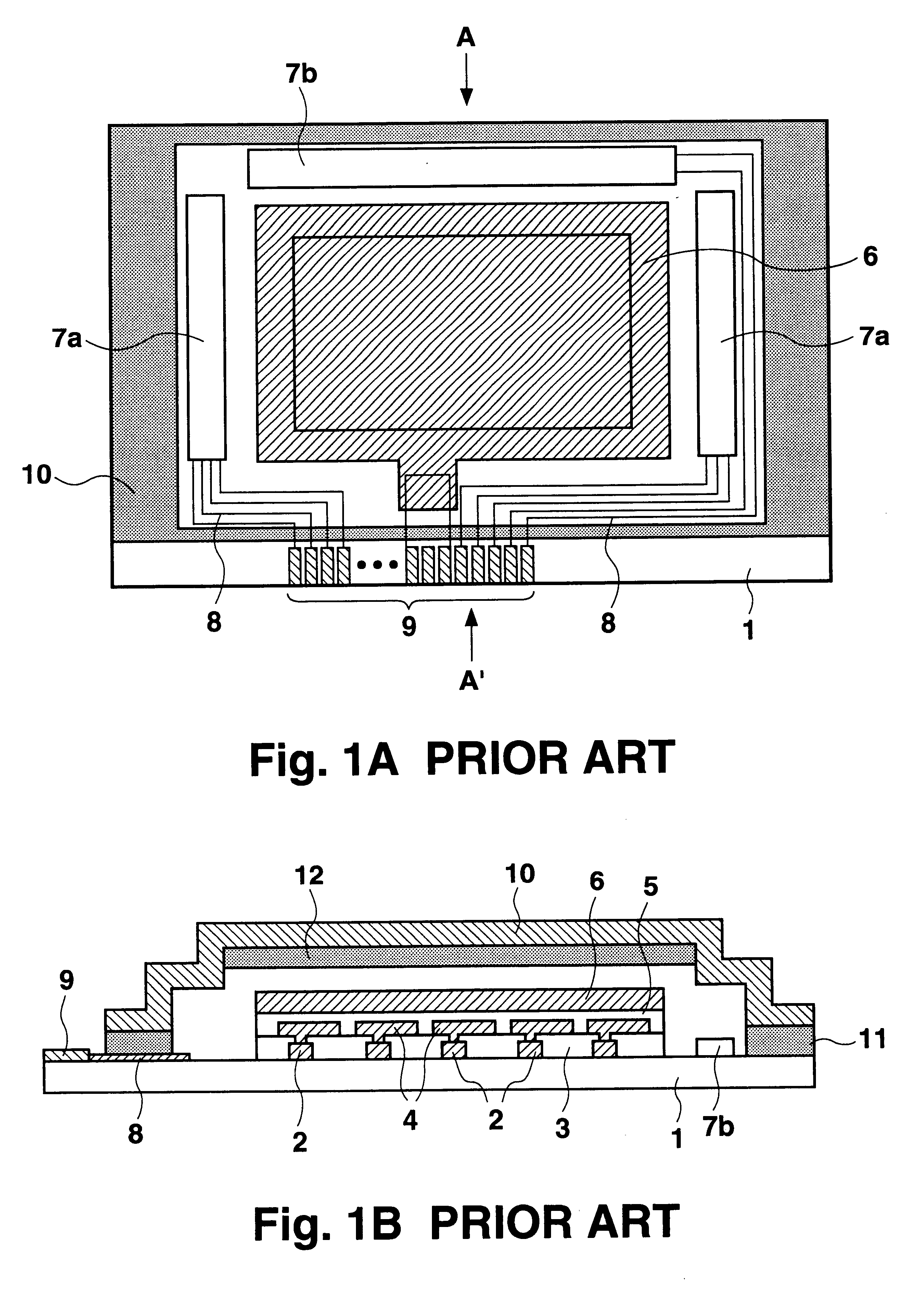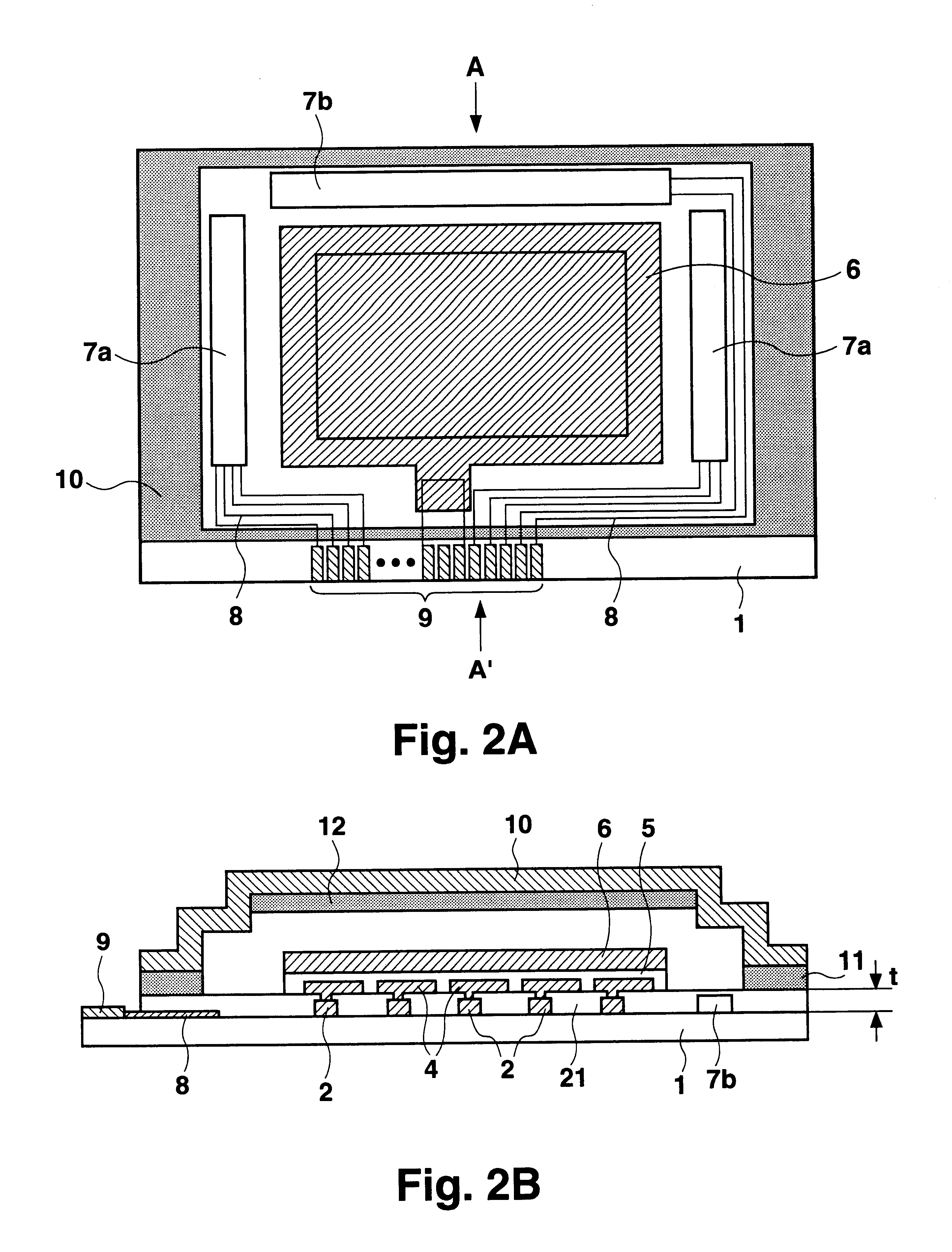Sealing structure for display device
- Summary
- Abstract
- Description
- Claims
- Application Information
AI Technical Summary
Benefits of technology
Problems solved by technology
Method used
Image
Examples
Embodiment Construction
FIG. 2A is a plan view of an organic EL display device according to a preferred embodiment of the present invention, and FIG. 2B shows a cross-sectional view taken along line A-A' of FIG. 2A. Structures similar to those in the conventional device described earlier are labeled with the same reference numerals, and detailed explanation of those structures will not be repeated. Arranged on a transparent substrate for respective pixels are selective drive circuits 2 and pixel electrodes 4. An emissive layer 5 and a counter electrode 6 are disposed covering those structures. Surrounding the pixel region including the selective drive circuits 2, pixel electrodes 4, emissive layer 5, and counter electrode 6, driver circuits 7a,7b are arranged for controlling the selective drive circuits 2 and applying predetermined voltages to the pixel electrodes 4. The driver circuits 7 are connected to terminals 9 by wiring 8. A protective casing 10 is arranged covering the display region. In the presen...
PUM
 Login to View More
Login to View More Abstract
Description
Claims
Application Information
 Login to View More
Login to View More - R&D
- Intellectual Property
- Life Sciences
- Materials
- Tech Scout
- Unparalleled Data Quality
- Higher Quality Content
- 60% Fewer Hallucinations
Browse by: Latest US Patents, China's latest patents, Technical Efficacy Thesaurus, Application Domain, Technology Topic, Popular Technical Reports.
© 2025 PatSnap. All rights reserved.Legal|Privacy policy|Modern Slavery Act Transparency Statement|Sitemap|About US| Contact US: help@patsnap.com



